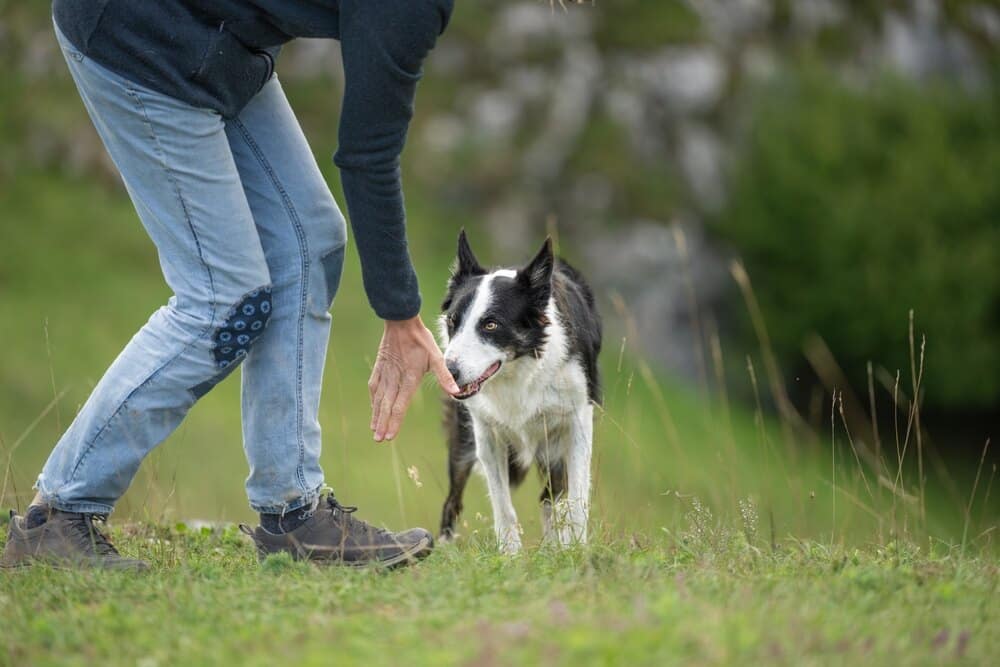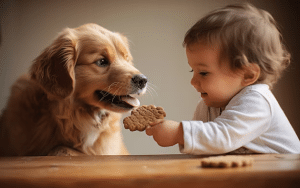Watching Rusty, my lively mixed-breed dog, zip through a makeshift agility course in our Seattle backyard last summer was a thrill. Dr. Carter, my trusted vet, grinned and said, “Agility training is a blast for any dog—it builds their body, mind, and your bond, whether you’re aiming for fun or ribbons.” This 1,500-word guide, drawn from my journey with Rusty and Dr. Carter’s expertise, explores dog agility training, its benefits, key exercises, and how to get started. Using insights from trusted sources [1,2,3], I’ll share tips to help any dog—from a nimble Border Collie to a plucky Chihuahua—shine in the USA’s parks or competition rings.
What is Agility Training?
Agility training is a team sport where a handler guides a dog through an obstacle course using voice, gestures, and body language—no treats or toys allowed during runs [1]. The dog navigates jumps, tunnels, and weave poles, showcasing speed, accuracy, and teamwork. It highlights a dog’s athleticism and the handler’s ability to communicate clearly, making it a test of training and trust [2]. Dr. Carter says, “Agility shows off a dog’s smarts and your connection—it’s like a dance you learn together” [1].
Why Agility Training is Great for Your Dog
Agility is more than fun; it’s a game-changer for dogs and owners. Here’s why:
- Fun and Fitness: Agility keeps dogs active, burning energy for high-drive breeds like Australian Shepherds. It’s also a workout for handlers running alongside [2,3]. Rusty’s sprints through tunnels tire him out and keep me moving.
- Mental Stimulation: Navigating obstacles requires focus and problem-solving, engaging a dog’s brain [1]. This is perfect for smart breeds like Shelties.
- Improved Relationship: Training builds trust and communication. Rusty and I grew closer mastering weave poles together [3].
- Confidence Boost: Overcoming challenges, like jumping a hoop, builds self-assurance, especially for shy dogs like Greyhounds [2].
- Focus for Reactive Dogs: Controlled settings help reactive breeds like Terriers stay calm around distractions [1,3].
- Healthy Weight Management: Regular activity prevents obesity, reducing risks like joint issues [2]. Rusty’s leaner since we started agility.
Tip: Start with low-impact exercises for puppies or seniors to avoid strain [1].
Best Breeds for Agility
Any dog can enjoy agility, but some breeds excel due to their athleticism and intelligence:
- Herding Breeds (e.g., Border Collies, Shelties, Corgis): Naturally agile and responsive, they thrive on complex courses [2].
- Shepherds (e.g., German Shepherds): Fast and focused, but may lose points for precision [1].
- Athletic Breeds (e.g., Australian Shepherds, Mudis): High energy and quick learners, perfect for agility [3].
- Small Breeds (e.g., Chihuahuas, Papillons): Surprisingly nimble, they handle scaled-down obstacles well [2].
- Mixed Breeds: Like Rusty, they shine with enthusiasm and training, regardless of pedigree [1].
Note: Breeds with physical limitations, like Dachshunds with long backs, need modified exercises to protect their spines [3]. Dr. Carter advises, “Check with your vet to tailor agility to your dog’s body” [1].
Benefits of Agility Training
Agility training delivers wide-ranging perks:
- Physical Fitness: Builds strength, flexibility, and endurance [2].
- Mental Stimulation: Sharpens focus and problem-solving [1].
- Stronger Bond: Deepens trust through teamwork [3].
- Improved Confidence: Boosts self-assurance in timid dogs [2].
- Obedience: Reinforces commands like “sit” and “stay” [1].
- Weight Management: Keeps dogs lean and healthy [3].
Equipment for Agility Training
You can buy professional agility gear or make your own with household items:
- Jumps: Use broomsticks, PVC pipes, or buckets for bars [2].
- Tunnels: Repurpose kids’ play tunnels or cardboard boxes [3].
- Weave Poles: Set up garden stakes or cones [1].
- Stop Table: An old coffee table works for Rusty [2].
- Seesaw: A sturdy plank on a low pivot point [3].
Tip: Ensure homemade equipment is safe—no sharp edges or unstable bases [1].
Training Steps for Agility
Here’s a step-by-step guide to get started, with tips to ensure success:
Step 1: Build Focus and Control
- Train in a quiet space, like your backyard, to minimize distractions. Rusty’s first sessions were in our distraction-free garage [1].
- Ensure your dog responds to you before starting obstacles [2].
- Tip: Avoid busy parks until focus is solid, especially for distractible breeds like Beagles [3].
Step 2: Master Basic Obedience
- Teach commands like “sit,” “stay,” “come,” and “heel.” These are the foundation for agility [1,2]. Rusty’s “sit” was rock-solid before we tackled jumps.
- Tip: Reinforce commands daily for breeds like Rottweilers, who prioritize precision [3].
Step 3: Introduce Easy Tricks
- Start with hand targeting (dog touches your hand with their nose) to teach control. Rusty learned this with cheese rewards [2].
- Progress to circling you, building coordination [1].
- Tip: Keep sessions fun for playful breeds like Terriers [3].
Step 4: Boost Fitness
- Build stamina with walks or play before tackling obstacles. Rusty’s daily hikes prepped him for course runs [2].
- Tip: Avoid intense exercises for unfit dogs or breeds like St. Bernards, who aren’t built for jumping [1].
Step 5: Use Positive Handling
- Guide your dog with treats and praise initially, phasing out treats to meet competition rules [3]. Rusty loved treats for his first tunnel run.
- Tip: Never force a dog over obstacles—build confidence gradually for shy breeds like Chihuahuas [2].
Step 6: Teach Obstacles Gradually
- Introduce one obstacle at a time (e.g., a low jump). Reward success with treats or praise [1]. Rusty took weeks to master weave poles.
- Tip: Break skills into small steps for methodical breeds like Collies [3].
Step 7: Connect the Course
- Combine obstacles into a short course, practicing transitions. Reward Rusty for completing a jump-tunnel combo [2].
- Tip: Keep sessions short (10–15 minutes) for puppies or seniors to avoid fatigue [1].
Common Agility Exercises
These exercises build skills and confidence:
- Stop Table: Dog pauses for 5 seconds on a low table. Rusty learned this with treats for staying still [2].
- Tunnels: Use a kids’ tunnel or box. Start short and guide with treats [3].
- Tire/Hoop Jump: Begin with a low hoop, raising it gradually. Rusty loves leaping through a hula hoop [1].
- Dog Walk: A narrow plank teaches balance. Start flat, then elevate slightly [2].
- Balance Board (Seesaw): Guide your dog over a low pivot board, rewarding balance [3].
- Hedge (Bar Jump): Use a broomstick on buckets, raising height slowly [1].
- Cones: Set up for direction changes or slalom. Rusty weaves through cones like a pro [2].
- Closed Tunnel: A tarp-covered box adds challenge. Some dogs, like Rusty, dive in eagerly; others need encouragement [3].
Tip: If a dog fears an obstacle, back off and try later with extra praise [1].
Preparing Your Dog for Agility
Before diving in:
- Master Basics: Ensure your dog knows “sit,” “stay,” and “come” (4–6 months for puppies) [2].
- Use Positive Motivation: Treats work for puppies; play motivates adults. Phase out treats for competitions [3].
- Start Simple: Avoid overwhelming your dog with complex courses early on [1].
- Train Consistently: Practice 2–3 times weekly, 10–30 minutes, to avoid boredom [2]. Rusty’s short sessions kept him eager.
- Protect Health: Lower jump heights for puppies or long-backed breeds like Dachshunds. Consult a vet for seniors or dogs with mobility issues [1,3].
- Consider Classes: Kennel clubs simulate competition settings, helping dogs like Rusty ignore distractions [2].
Precaution: Avoid overtraining. Older dogs or those new to commands may need professional guidance [3].
Breed-Specific Considerations
Dr. Carter says, “Match agility to your dog’s strengths” [1]:
- Herding Breeds (e.g., Border Collies): Excel in speed and focus but may overthink [2].
- Terriers: Competitive but distractible; use high-value rewards [1].
- Rottweilers: Precise but slower; emphasize accuracy [3].
- Small Breeds (e.g., Papillons): Nimble but need scaled obstacles [2].
- Puppies: Start low-impact at 4–6 months, avoiding jumps until growth plates close [1].
Key Takeaway
Agility training is a fun, rewarding way to bond with your dog, boost their confidence, and keep them fit. Any breed can shine with patience, positivity, and gradual training, making it a joyful adventure for both of you.
Conclusion
Agility training turned Rusty into a confident, happy dog, zooming through our backyard course with glee. Dr. Carter’s advice—“Keep it fun, and your dog will love it”—rang true [1]. Whether you’re in a busy Chicago park or a quiet Idaho field, agility builds fitness, smarts, and a deeper bond. Start slow, stay positive, and enjoy the ride with your furry teammate.
References:
[1] PetMD.com, “Dog Agility Training Basics” (2025-03-15).
[2] AKC.org, “Agility Training for All Breeds” (2025-06-20).
[3] ASPCA.org, “Dog Training Resources” (2025-01-10).



